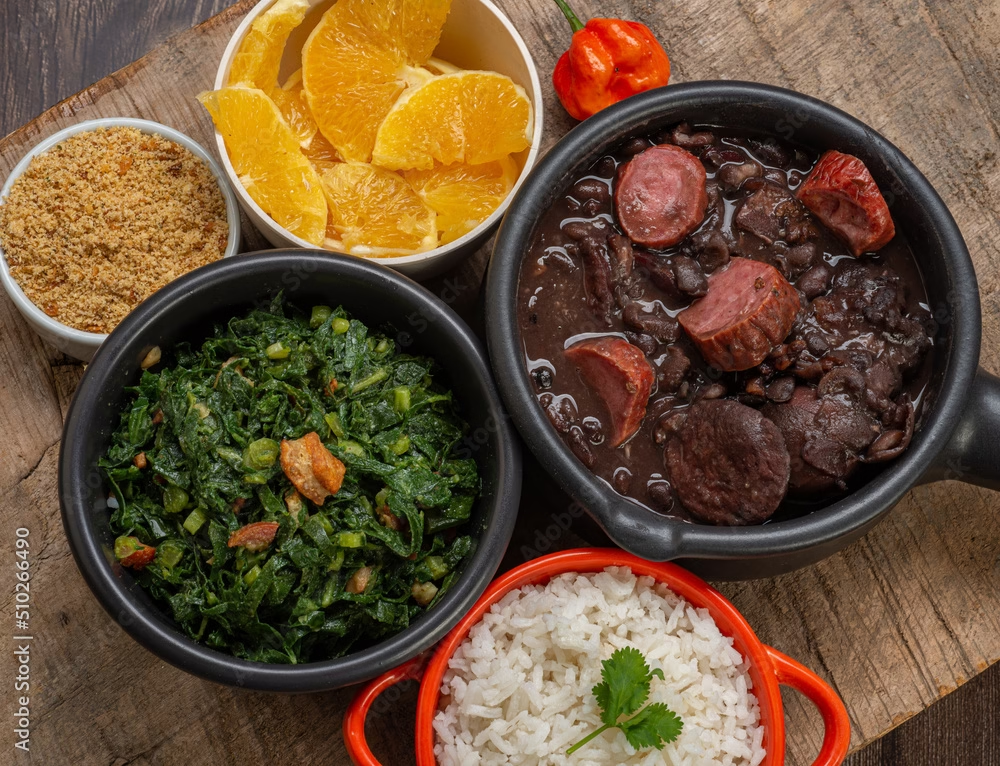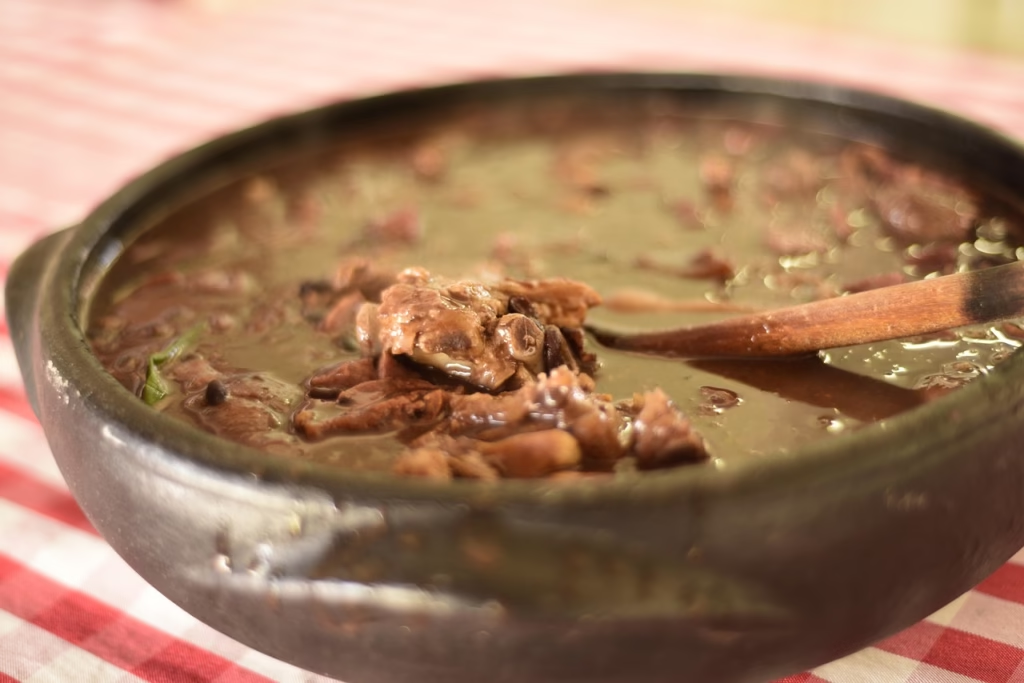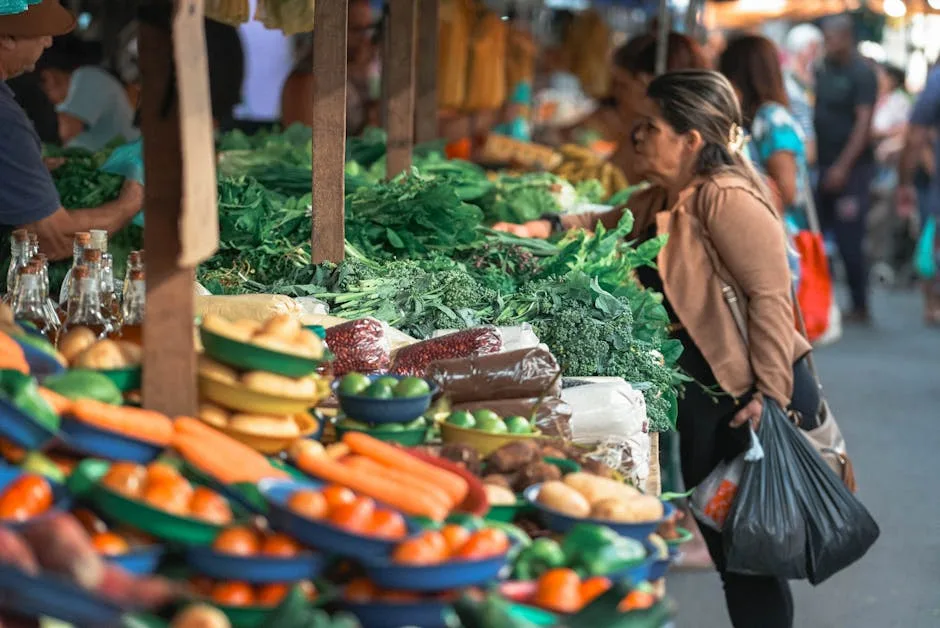Feijoada is a traditional Brazilian dish that embodies the rich culinary heritage of Brazil. At its core, this hearty stew primarily consists of black beans combined with a variety of meats such as pork and beef. The origins of feijoada trace back to the 16th century, with historical accounts linking it to the influence of Portuguese cuisine and African culinary traditions brought by enslaved individuals. Initially, it was a rustic dish prepared by Brazilian slaves who utilized the less desirable cuts of meat, simmering them slowly with beans to create a flavorful, nourishing meal.
Over the years, feijoada has evolved significantly, becoming a staple in Brazilian households and a focal point of gatherings. It is generally associated with communal dining, as families and friends come together to enjoy this rich dish, often accompanied by rice, collard greens, and orange slices. The shared experience of feijoada highlights its cultural significance in Brazilian society; the dish is often served during festivities and special occasions, making it more than just a meal but a celebration of community and togetherness.
The preparation of feijoada showcases the culinary diversity of Brazil, with each region contributing its unique twist to the stew. While the classic recipe remains a beloved favorite, you may find variations that include different meats such as sausage, beef jerky, and even additional ingredients like vegetables and spices, indicative of local tastes. Thus, feijoada stands as a testament to Brazil’s rich and varied food culture, reflecting both historical influences and modern adaptations. It sustains its role as a dish that brings people together, operating within a social context that enhances the culinary experience.
The Ingredients that Make Feijoada Unique
Feijoada, with its rich history and complex flavors, is a quintessential Brazilian dish that prominently features a variety of key ingredients. At the heart of this culinary creation lies black beans, which act as the base and provide a deep, earthy flavor. The beans are cooked slowly, absorbing the tastes of the meats and spices, resulting in a hearty and satisfying stew.
The meats used in feijoada are crucial to its unique flavor profile. Traditionally, pork shoulder is one of the primary proteins, valued for its tenderness and richness. In addition to pork, various sausages, such as smoked sausage and spicy linguica, are added, contributing distinct flavors and textures. Beef cuts, including beef jerky, can also be included to enhance the dish’s overall depth. Each region of Brazil may vary the selection of meats, reflecting local preferences and available resources, thereby introducing regional nuances to this beloved dish.
Spices play a fundamental role in defining the character of feijoada. Garlic, onion, and bay leaves are commonly used to build the foundational flavor, while a hint of black pepper adds warmth. Other ingredients, such as orange slices, are often served alongside the stew, providing a refreshing contrast that lightens the richness of the meats. Additionally, rice is typically served as a side dish, allowing diners to soak up the flavorful sauce and creating a balanced meal. Alongside rice, collard greens are often featured, adding a vibrant color and a touch of bitterness that complements the stew.
Overall, feijoada is not just a dish but a representation of Brazil’s diverse culinary landscape. With every region improvising and adapting ingredients, one can appreciate the myriad flavors that make feijoada a truly unique and cherished meal across the nation.
How to Prepare a Perfect Feijoada
Preparing a perfect feijoada, a traditional Brazilian dish, involves a combination of meticulous cooking techniques and a thoughtful selection of ingredients. To begin, gather the essentials: black beans, various cuts of meat (such as pork, beef, and sausage), garlic, onions, peppers, and a selection of spices including bay leaves and cumin. The preparation time typically ranges from 30 minutes for ingredient preparation and soaking the beans to around 3-4 hours for cooking, making the dish suitable for a leisurely weekend meal.
The first step in crafting your feijoada is to soak the black beans overnight. This not only reduces cooking time but also enhances flavor. Once soaked, drain and rinse the beans before placing them in a large pot with fresh water. Next, add the meats in stages; start with the cuts that require longer cooking times, such as pork and beef, followed by sausages. As the meats cook, their flavors will infuse the beans, creating a rich and hearty dish.
While the beans and meats simmer, sauté garlic and onions in a separate pan until they are fragrant and golden. Incorporating this mixture into the feijoada will elevate its taste. It is crucial to monitor the pot closely during the cooking process, stirring occasionally to prevent sticking and ensure even cooking. A common pitfall is overcooking the beans; they should be tender but not mushy.
For those with dietary restrictions, the traditional recipe can be easily adapted. For a vegetarian version, consider substituting plant-based proteins and vegetable broth. Additionally, the types of beans can be varied to suit personal preference. By following these steps, you will be well on your way to creating a delectable feijoada that honors its vibrant heritage while accommodating individual tastes.
The Cultural Significance of Feijoada in Brazilian Society
Feijoada, the black bean stew often enriched with various cuts of meat, holds a vital place in Brazilian culture, symbolizing unity and tradition. Traditionally served during gatherings, this hearty dish has transcended mere sustenance to embody companionship and celebration. Feijoada is especially recognized as a staple during festive occasions such as Carnival and family reunions, where its preparation becomes a communal activity that strengthens social bonds.
The customs surrounding feijoada extend beyond its preparation; the dish is typically accompanied by a variety of sides that enhance its flavor and presentation. Common accompaniments include rice, collard greens, orange slices, and farofa—a toasted cassava flour mixture. The distinctive elements of this meal reflect Brazil’s diverse culinary influences, bringing together ingredients from indigenous, African, and European traditions. This melding of flavors illustrates the country’s rich history and the importance of food as a medium for cultural expression.
Moreover, feijoada is often enjoyed with beverages such as caipirinha, Brazil’s iconic cocktail made with cachaça, lime, and sugar. The pairing of feijoada with a refreshing drink adds to the overall experience, making it a centerpiece at social gatherings. Anecdotes passed through generations reveal that many families have special recipes or rituals tied to preparing feijoada, showcasing its role in creating lasting memories. These narratives reinforce feijoada’s status not just as a dish, but as a cherished tradition that fosters a sense of community and belonging amongst those who partake in it.
Ultimately, feijoada serves as more than a delicious meal; it encapsulates the essence of Brazilian identity and heritage, signifying the importance of togetherness in the culinary landscape of Brazil.






